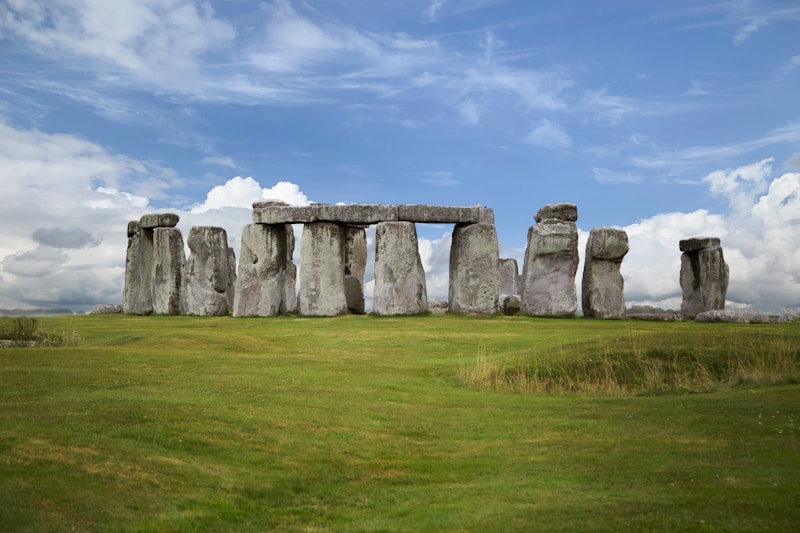Questions and Answers
¿Qué propósito tenía la música prehistórica además del entretenimiento?
Comunicación
¿Cómo se creaban las flautas de hueso mencionadas en el texto?
Realizando cortes a lo largo del hueso para permitir el flujo de aire
¿Qué material se utilizaba para crear los tambores de cerámica mencionados en el texto?
Arcilla
¿Qué tipo de instrumentos eran los Kinniks descritos en el texto?
Signup and view all the answers
¿Cuál era uno de los propósitos de la música prehistórica según el texto?
Signup and view all the answers
¿Qué material se utilizaba para crear las clavijas rítmicas descritas en el texto?
Signup and view all the answers
¿Cuál fue el material más comúnmente utilizado para hacer instrumentos musicales prehistóricos durante el Paleolítico?
Signup and view all the answers
¿Qué tipo de materiales componían la mayoría de instrumentos musicales prehistóricos que no han sobrevivido a lo largo del tiempo?
Signup and view all the answers
¿Por qué se consideran las flautas de hueso como los instrumentos musicales prehistóricos más famosos?
Signup and view all the answers
¿Qué tipo de instrumentalización musical se cree que comenzó en el periodo Paleolítico?
Signup and view all the answers
¿Cuál de los siguientes NO es un material del cual se hacían instrumentos prehistóricos?
Signup and view all the answers
¿Qué tipo de materiales no han sobrevivido con el tiempo y son difíciles de rastrear para entender la música de civilizaciones antiguas?
Signup and view all the answers
Study Notes
Prehistoric Music: Exploring the Sounds of Ancient Times
Throughout human history, music has been an intrinsic part of our culture, bringing people together, expressing emotions, and telling stories. But did you know that our love for music actually stretches far back, into the prehistoric era? In this article, we'll delve into the fascinating world of prehistoric music, specifically focusing on its instruments.
The Origins of Prehistoric Music
Prehistoric music did not begin with individual instruments. Instead, it started with the human voice, which has been around since our earliest ancestors. Singing, chanting, and rhythmic vocalizations have been a part of human life for thousands of years.
The oldest form of prehistoric music instrumentation can be traced back to the Paleolithic period (circa 30,000 to 10,000 BCE). During this time, some of the earliest musical instruments were made from organic materials like bones, teeth, and shells.
Instruments of Ancient Times
Prehistoric instruments were quite different from the ones we use today. Many were made from materials that have not survived through time, such as plants, skins, and feathers. However, we can still gain insights into the sounds and instruments of early human civilizations from the few artifacts that have been discovered and preserved.
-
Bone flutes: The most famous prehistoric musical instruments are the bone flutes, which have been discovered throughout the world. The earliest known bone flute was found in a cave in Germany and dates back to around 35,000 BCE. Bone flutes were made by carving notches into the length of a bone, allowing air to flow in and out of the device, creating musical tones.
-
Clay pot drums: The oldest known clay pot drum was found in China and dates back to around 7,000 BCE. The drum was made from a pottery vessel with an opening at the top, and the skin of an animal was stretched over the opening to create the drumhead.
-
Kinniks and Kinnik-like instruments: Kinniks are ancient string instruments discovered in Siberia, dating back to 5,000 BCE. These instruments were made from horns with strings attached, and they were played by blowing into one end and plucking the strings.
-
Clacking sticks: Clacking sticks, like the ones found in the Gravettian cave site of Grotte du Renne in France, are among the oldest known percussion instruments. Dating back to around 28,000 BCE, these sticks were made from bone or ivory and were used to create simple rhythms and percussion.
Purposes of Prehistoric Music
Prehistoric music was not only for entertainment; it had various practical purposes.
-
Communication: Music could be used as a means of communication over great distances. Certain tones and rhythms could convey messages, orders, or warning signals within a community or tribe.
-
Ritual: Music was deeply intertwined with religious rituals and ceremonies. Shamans and other religious leaders used music to induce trances, heal illnesses, and communicate with spirits.
-
Storytelling: Prehistoric music was also used to tell stories and pass on knowledge from one generation to another. Through song, dances, and musical performances, early humans could convey the history, culture, and traditions of their communities.
Why Study Prehistoric Music?
Studying prehistoric music provides valuable insights into our past and sheds light on the origins and development of human culture. By examining ancient musical instruments and practices, we can gain a better understanding of the way our ancestors lived and thrived. Music has always been a fundamental part of human culture, and by exploring its prehistoric roots, we can appreciate our shared heritage and the power of music to bring us together.
Studying That Suits You
Use AI to generate personalized quizzes and flashcards to suit your learning preferences.
Description
Descubre la fascinante historia de la música prehistórica, desde sus orígenes con la voz humana hasta el desarrollo de instrumentos como las flautas de hueso y los tambores de olla. Explora los propósitos multifacéticos de la música prehistórica, desde la comunicación hasta el ritual y la narración de historias. Aprende por qué estudiar la música prehistórica es crucial para comprender nuestra cultura y herencia compartida.




